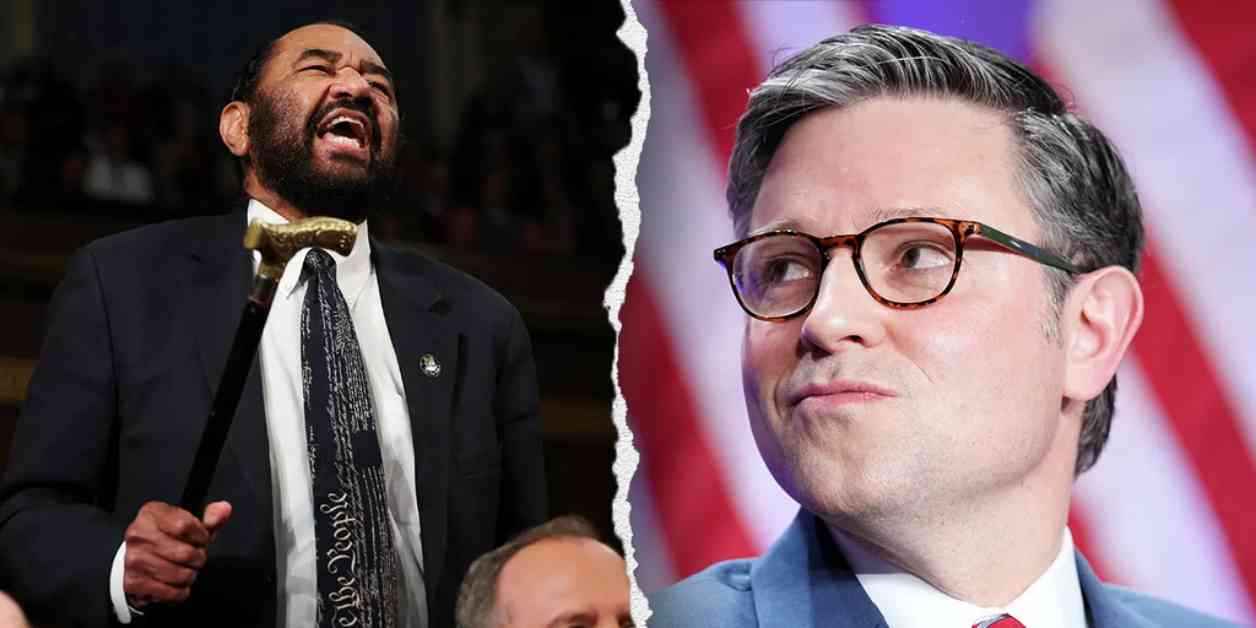In the wake of Rep. Al Green’s disruption of President Donald Trump’s joint address to Congress, both Republican and independent voters expressed support for the pushback against the Texas Democratic lawmaker. The incident, which led to Green being removed from the House chamber, sparked chants of “USA!” and garnered varied reactions from different voter groups.
As Green attempted to disrupt Trump’s speech, chants of “USA!” erupted in the House chamber, with Fox News voter dials indicating positive reactions from Republican and independent voters, represented by the red and yellow lines respectively. In contrast, Democratic voters, represented by the blue line, had a mostly neutral reaction that slightly leaned towards negativity as the chants continued.
The disruption occurred as Trump was touting the GOP’s control of the White House and both chambers of Congress, prompting Green to shout that the president had “no mandate.” House Speaker Mike Johnson took action, asking Green to leave the chamber, which was carried out by the U.S. Sergeant-At-Arms. Green later expressed acceptance of the punishment, emphasizing his commitment to opposing the president’s proposed cuts to Medicaid, Medicare, and Social Security.
In response to the incident, Republicans criticized the behavior of the opposition party during the joint address. House GOP Policy Committee Chair Kevin Hern described the Democrats’ actions as “ridiculous” and questioned how any American could support such behavior. Similarly, Rep. Buddy Carter emphasized the need for consequences for Green’s outburst, highlighting a lack of decorum and respect for the Office of the Presidency.
Expert Commentary on Political Decorum
The disruption of President Trump’s speech by Rep. Al Green has sparked a debate on political decorum and the appropriate conduct during official proceedings. Political analyst Sarah Thompson weighed in on the incident, stating, “While it is important for representatives to voice their concerns, there are established protocols for civil discourse in legislative settings. Actions like those displayed by Rep. Green can polarize opinions and detract from the substantive issues being discussed.”
Thompson’s comments underscore the delicate balance between expressing dissent and upholding the decorum expected in political settings. As elected officials navigate complex policy debates and partisan tensions, maintaining respect for institutional norms remains paramount in fostering constructive dialogue and effective governance.
The Role of Social Media in Political Discourse
The eruption of social media reactions following Rep. Green’s interruption of President Trump’s address highlights the evolving landscape of political discourse in the digital age. Online platforms serve as arenas for immediate reactions and diverse perspectives, shaping public opinion and amplifying political events.
Social media strategist David Martinez emphasized the impact of real-time engagement on shaping narratives and influencing public perception. “Social media has democratized political discourse, allowing individuals to express their views and engage with current events in unprecedented ways,” Martinez noted. However, he also cautioned against the potential pitfalls of echo chambers and misinformation that can distort the public discourse.
As political actors navigate the complexities of online communication, understanding the nuances of social media dynamics and the power of digital engagement becomes essential in shaping public narratives and driving meaningful dialogue.
In conclusion, the disruption caused by Rep. Al Green during President Trump’s joint address to Congress underscores the tensions and divergent reactions that characterize contemporary political discourse. As lawmakers grapple with the challenges of partisan divisions and institutional norms, the incident serves as a reminder of the importance of respectful dialogue and civil engagement in fostering a healthy democratic society.


